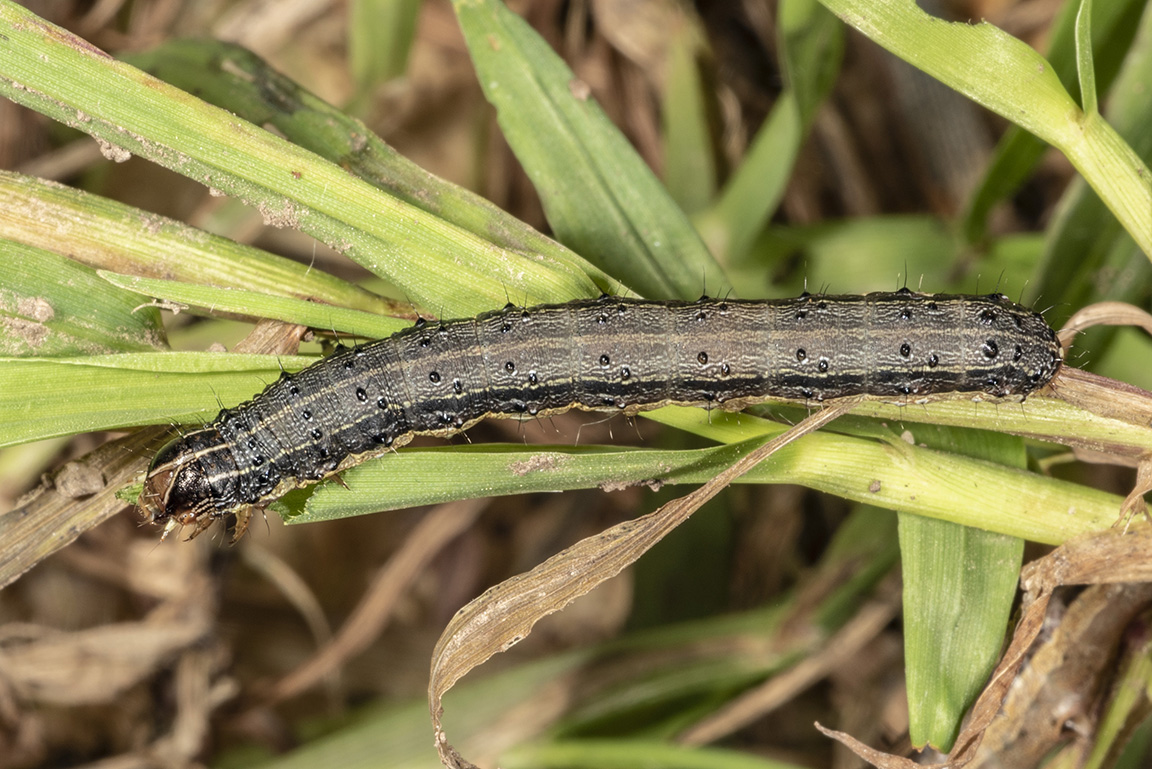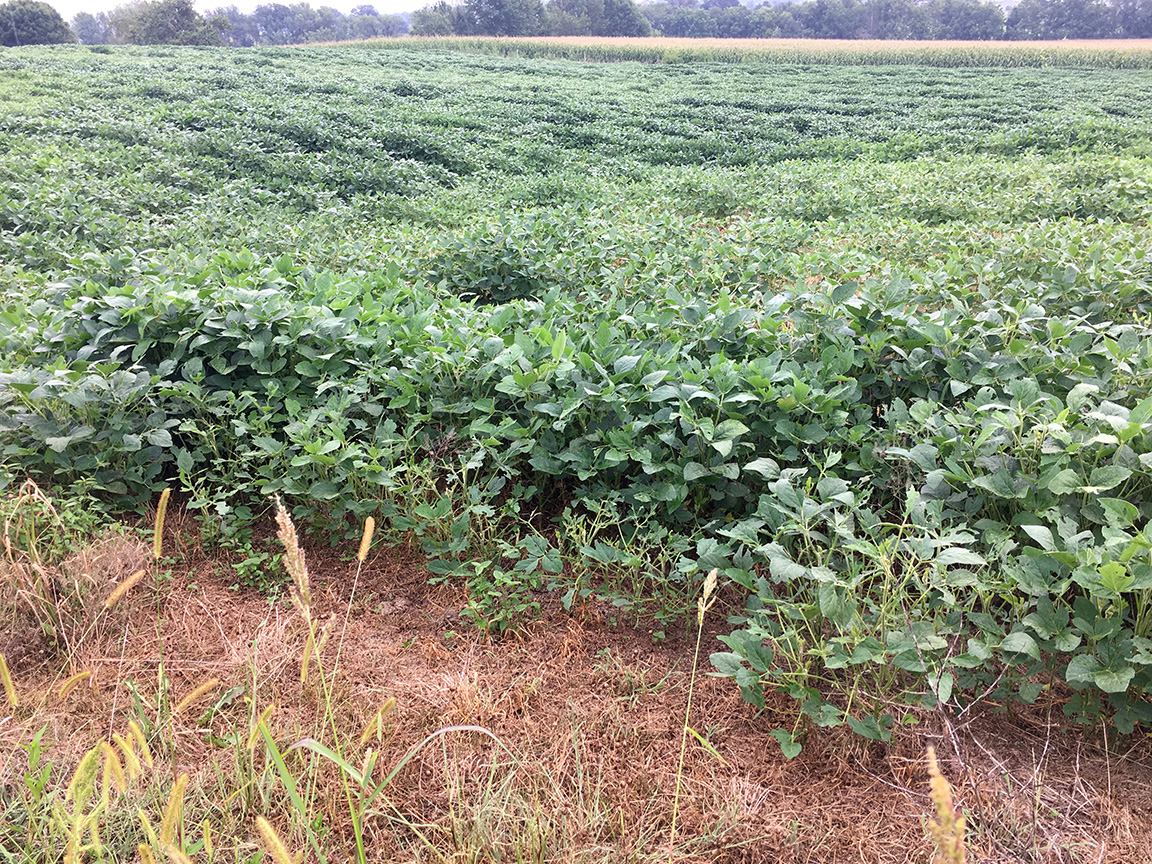In recent weeks, fall armyworm infestations have been decimating some soybean and forage crops in Kentucky. The University of Kentucky Extension Entomologists, have recently reported in their Pest News of large populations of fall armyworm (FAW) moth captures. This likely occurred in southern Indiana counties as well. Just like a very similar species, the armyworm, the behavior is much the same in that they can consume large amounts of foliage as they move in large numbers. One major difference, whereas armyworm feeds primarily on grasses (e.g., corn, small grains, fescue), fall armyworm will feed on most plants, both grasses and broadleaves. Incidentally, this is the same insect that has been laying waste to corn and other crops across sub-Saharan Africa for several years now after reaching the continent in 2016 – it’s an after-thought for most of us in the corn belt, but definitely one of the top pests of grain production worldwide.
In Indiana, those with late-season crops, (e.g., double-crop soybean, forages, cover crops, alfalfa) should be inspecting for feeding damage. This is very important for newly-seeded forages. You have been warned, get them early! When the worms are about an inch long, they can denude plants “overnight” when they are “marching.” Too, larger worms are very difficult to control.





